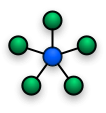Cell and tissue lysis hub: Difference between revisions
From OpenWetWare
Jump to navigationJump to search
(new method, pros and cons) |
|||
| Line 15: | Line 15: | ||
* precaution: do on ice to reduce heat build-up and denaturation | * precaution: do on ice to reduce heat build-up and denaturation | ||
material: drills (polytron), pestle/tube (dounce) bead beaters | material: drills (polytron), pestle/tube (dounce) bead beaters | ||
=== Tissue lysis in liquid nitrogen === | |||
* best for tissue fragments (e.g. biopsy samples, tumor samples) or plant samples | |||
* involves chilling the sample in liquid nitrogen and immediately afterwards subjecting to impact or grinding | |||
* low cost, manual methods require a mortar and pestle or specialized stainless steel devices known as tissue pulverizer | |||
* higher cost, mechanised methods involve a variety of specialized cryogenic cell disruption machines | |||
* plus: good protein extraction from small, tough samples | |||
* negative: using some devices causes residual contamination between samples, not suitable for PCR amplification | |||
=== Freeze-thaw === | === Freeze-thaw === | ||
Revision as of 09:42, 18 June 2013

This page should point you to the many different general and lab-specific protocols describing tissue and cell lysis and serve as forum for comparison. The ups and downs of various methods from sonication, homogenization, freeze-thaw cycles, and detergent-based lysis are examined below.
Comparison of lysis methods
Sonication
- most efficient method of cell fractionation
- problem: heat build up which can denature proteins (proportionate to length of sonication)
- precaution: do on ice and sonicate intermittantly
material: ultrasonication bath or rods
Homogenisation
- best for animal tissue; less suitable for cells
- precaution: do on ice to reduce heat build-up and denaturation
material: drills (polytron), pestle/tube (dounce) bead beaters
Tissue lysis in liquid nitrogen
- best for tissue fragments (e.g. biopsy samples, tumor samples) or plant samples
- involves chilling the sample in liquid nitrogen and immediately afterwards subjecting to impact or grinding
- low cost, manual methods require a mortar and pestle or specialized stainless steel devices known as tissue pulverizer
- higher cost, mechanised methods involve a variety of specialized cryogenic cell disruption machines
- plus: good protein extraction from small, tough samples
- negative: using some devices causes residual contamination between samples, not suitable for PCR amplification
Freeze-thaw
- least effective method
- plus: does not denature proteins as much as other methods
material: pestle and mortar, liquid nitrogen
Detergents
- chemical method of lysis
- problems: detergent may inhibit subsequent reactions
- problems: detergent may disrupts protein interactions
no additional material required, just the chemicals and typical tubes
Specific protocols
| description/link | target | lysis method | type of material |
|---|---|---|---|
| Silver: Lysate for Western | protein | detergent (Triton) | cells |
| Sauer:Lysing E. coli with Lysozymes | lysozyme | bacteria | |
| Blackburn:Yeast Colony PCR | DNA | NaOH | yeast |
| Jacobs:Protocol Total Protein Isolation Using RIPA Lysis Buffer | protein | detergent (RIPA buffer) | cells |
| Streptomyces:Protocols/Mini-Maxi Prep | DNA | NaOH | bacteria |
| Western Blot/Tissue Preparation | protein | detergent & physical disruption | tissue |
| Eccles:Protein Lysates from Cells in Culture | protein | detergent (SDS, NP40) | cells |
| Eccles:Protein Lysates from Tissue | protein | detergent, physical, freezing | tissue |
| RNA extraction using trizol/tri | RNA | phenol | cells |
| Sauer:RNA Purification from E. coli | RNA | various options | bacteria |
| add another method's name | target | lysis method | type of starting material |